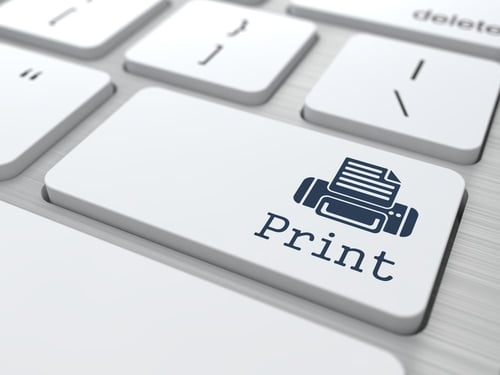3D printing has increasingly captured the interest of both the general public and technology-savvy companies in the last few years. The promise is that there will be a revolution in how manufacturing and commerce are conducted. On the other hand, more cautious voices have pointed out that there is currently too much hype on the subject, and that the new manufacturing technologies will supplement rather than replace old ones.
In any event, 3D printing is making inroads into numerous industries, with some interesting and especially unresolved IPR issues thrown in. For these reasons, the attorneys of the Berggren 3D printing SIG (special interest group) have established a 3D printing blog to cover the commercial, industrial and IPR aspects of 3D printing.
In this introductory posting we will briefly outline what 3D printing means for business and IPR, and why you should care.
The Berggren 3D printing SIG
At Berggren, we believe that 3D printing is going to be a big deal not only for intellectual property rights, but more importantly for the business of the companies that own IPR, i.e. our clients.
To that end, we have established a special interest group (SIG) of attorneys dedicated to IPR in 3D printing to maintain up-to-date competence as the change unfolds.
What about IPR?
3D printing is set to transform industrial manufacturing and supply chains. This means that those of us working with IPR need to think differently about why, and how to protect IPR in a world of digital distribution platforms and manufacture at the point of purchase, where value increasingly resides in an informational form instead of in physical artefacts.
Why care?
We believe that the 3D printing ecosystem will resemble those organised around Spotify, Netflix or Appstore. In such an ecosystem there are well-functioning digital marketplaces enabling, for example, designers offer blueprints to both B2B and B2C customers (and probably C2C and C2B too).
This essentially means massive IPR licensing, as the design owners give customers and the parties printing products the permission to use their copyright, design, patent and/or trademark. And naturally, IPR must be protected in order to be meaningfully licensed. But: unless the IPR is protected in the relevant countries, nothing stops users or rival companies from copying the products and offering them to customers without paying a cent in royalties to the designer.
Perhaps more significantly, the above-mentioned marketplace can serve the additional highly valuable purpose of stipulating the set of rules which enable convenient, well-defined and orderly exchange between the ecosystem actors. After all, the music industry was in considerable technology-enabled and piracy-induced turmoil until Spotify and others stepped in to do just that.
How to do it?
The “how” question is a little bit more involved, and one which we will dive into in depth in future blog posts. The short answer is that IPR protection needs to be realigned with changes in supply chains. For example, in a 3D printing world, products remain longer in the supply chain as unembodied information, which is extremely easy to transmit, duplicate, store and modify, whereby old ideas about IPR may not fully apply.
Since trademarks, designs and patents are all regional rights, IPR owners should seek protection in the countries in which key 3D printing activities take place. This means, for example, countries in which online platforms are typically hosted (particularly the US) and where the largest markets for 3D printed products will emerge and therefore where the corresponding printing facilities are likely to be located.
Patents, trademarks and licensing are effected
In the wake of 3D printing, the scope of protection of patents may warrant some rethinking, though currently there are more questions than definite answers. For example, should patent claims be written in such a way as to expressly take into account additive manufacturing as a production method or the specific production method? Or perhaps even expressing some aspects of the invention as 3D printing code or instructions? Or, is the very notion of patentability in a need for revision? For example, an invention may not be implementable with the 3D printing technology of today, but it may be so within a few years.
Correspondingly, trademarks should more widely cover services in an era in which goods are increasingly delivered in digital form. Namely, such a delivery, not to mention the printing of products for others, may be viewed as a service, particularly if vendors offer value added services such as product customisation.
With respect to IPR licencing, we will need to find a fair, win-win way of doing that so that innovative products can be made available in the new marketplace in exchange for fair compensation. This means drafting IPR contracts and clauses for the 3D printing age where the parties concerned in the manufacturing process may be different than with conventionally manufactured and distributed goods. And the same may even apply to notions such as “produce”, “reproduce” and “product”.
The road ahead
In the coming months, this blog will continue with a series of posts that dive in depth into the more specific commercial and IPR aspects of 3D printing. We will be addressing the following subjects, and more:
- IP protection transitioning from manufacturing to design
- 3D printing related patenting
- Metals in transformation
- Additive manufacturing and medical technology
- Business models in 3D printing
Stay tuned!



